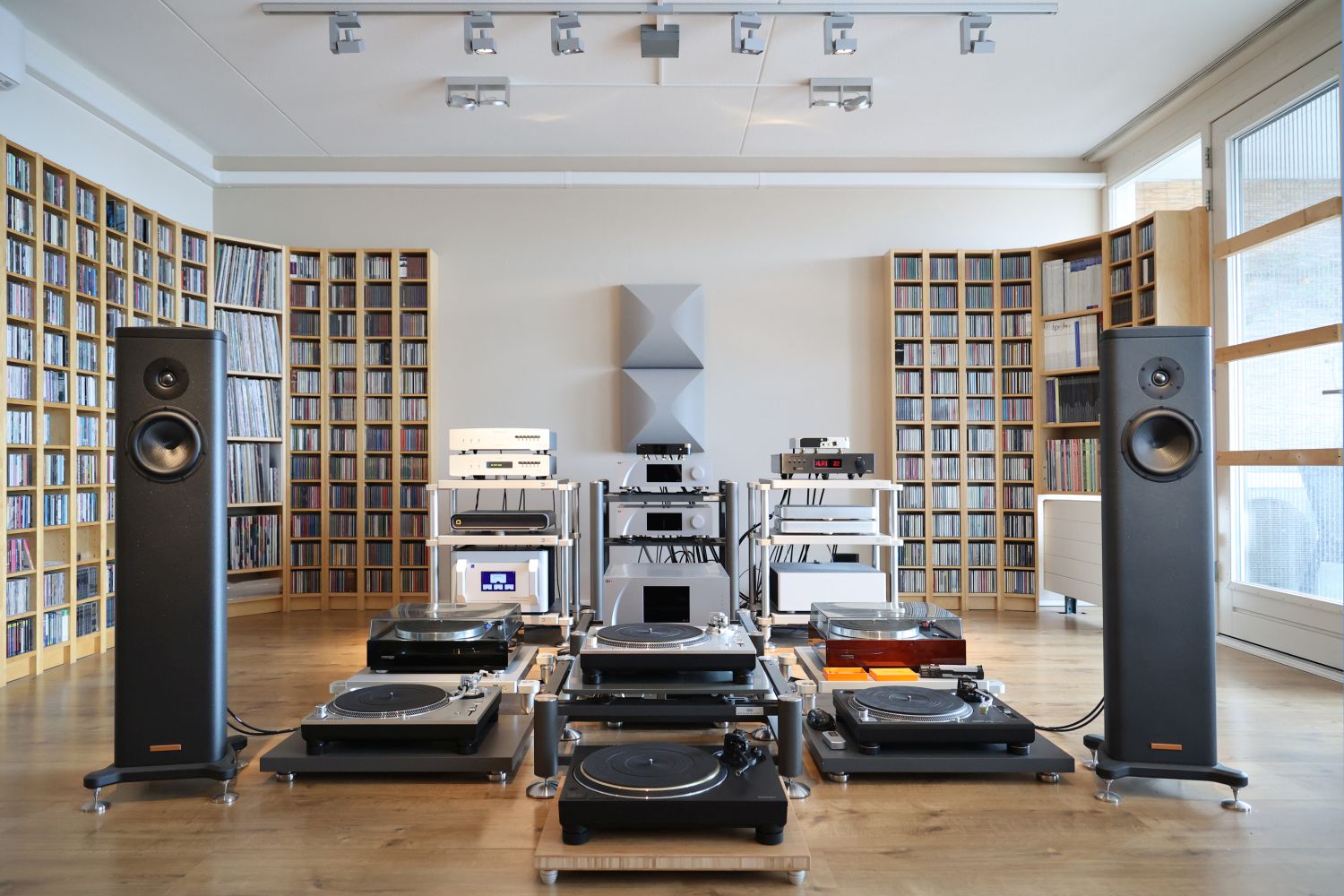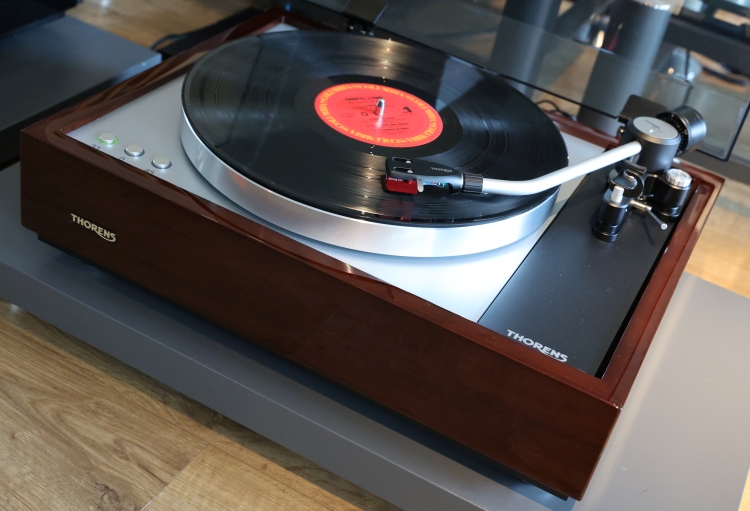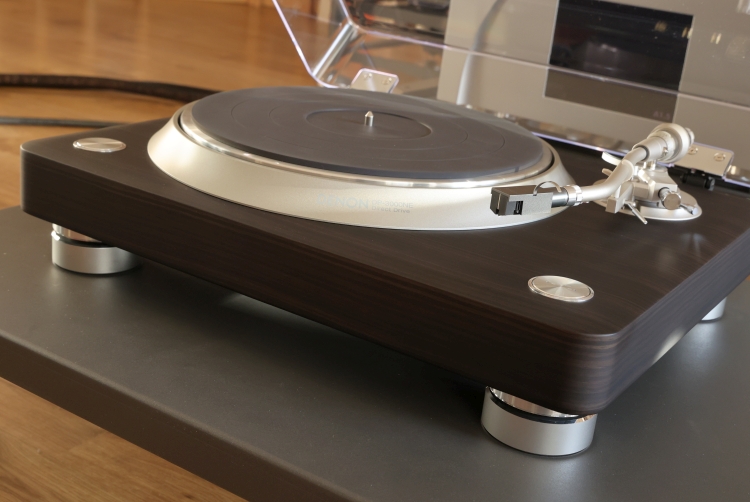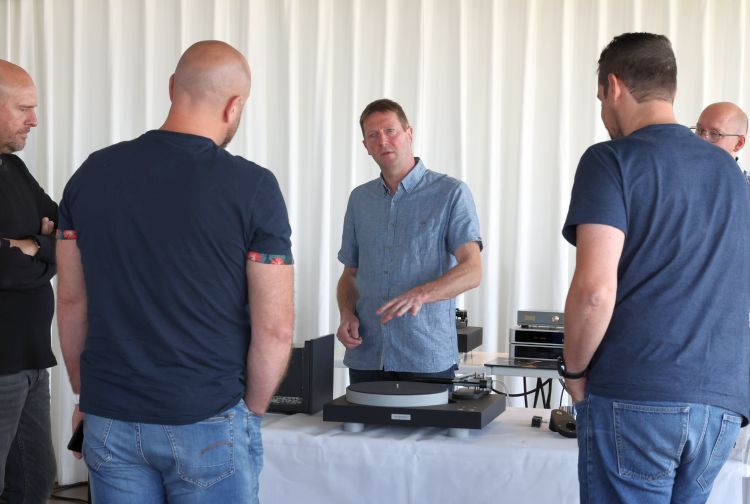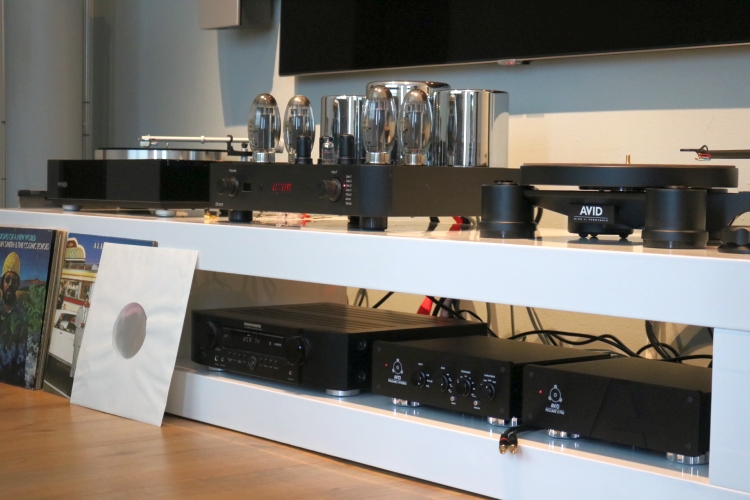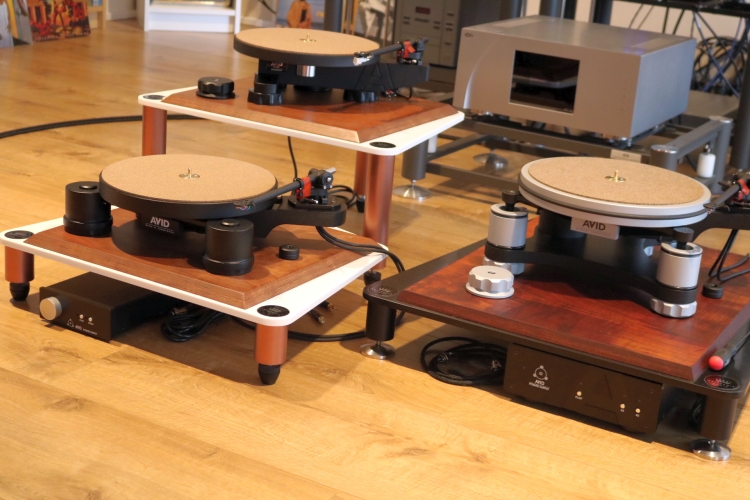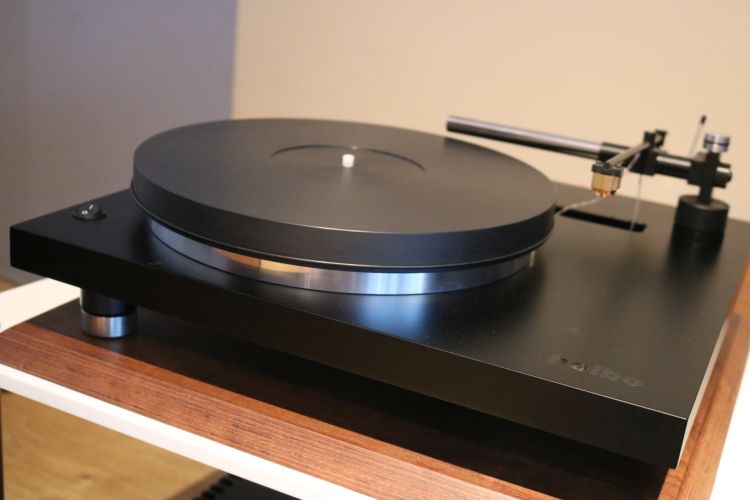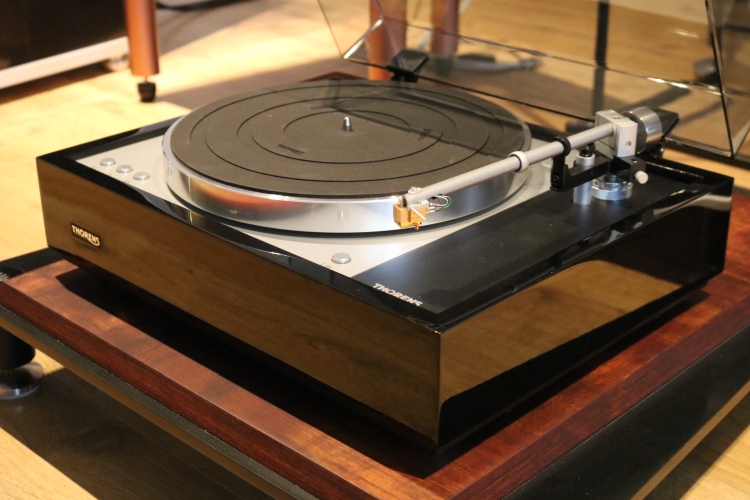Bergmann Magne Air-Bearing turntable with DS Audio DS W3 Optical Cartridge
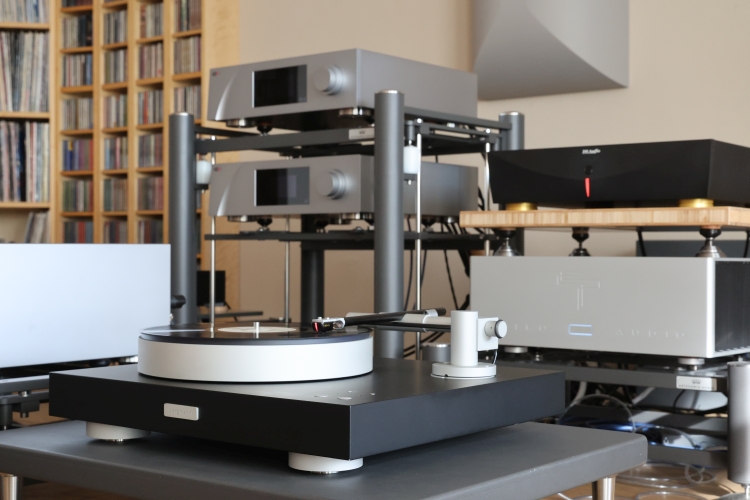
Review samples supplied by Mafico
Retail prices:
DS-W3 Equalizer € 10.249,00
DS-W3 Equalizer + Optical Cartridge (Set) € 14.529,00
DS-W3 Replace Needle € 2.729,00
After visiting the Bergmann presentation hosted at the Rotterdam Euromast and publishing my report in September 2022, it was soon decided that I would also make a dedicated Bergmann turntable review. It took some time to get arranged, but this has now materialized.
For this review, I will be listening to the very interesting combination of a Bergmann Magne Air-Bearing turntable with a DS Audio W3 Optical Cartridge System. As such, my listening impressions will focus on the turntable/cartridge combination, not its individual parts.
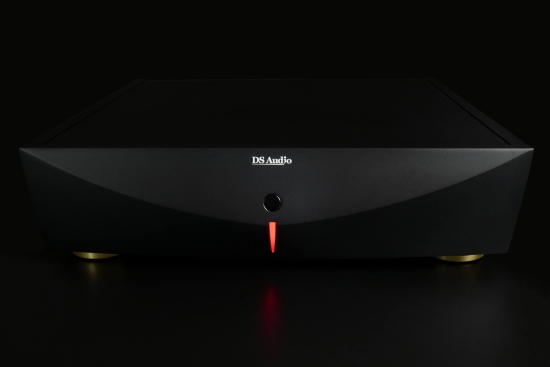
DS Audio
The DS Audio products represent a unique and proprietary manner of translating LP grooves to music. When one thinks of an ‘Optical Cartridge,’ one could easily mistake the technique for that used inside Laser turntables such as the ELP model, but nothing can be further from the truth. Incidentally, the ELP is fully analog, but it uses reflected laser light to read the grooves, whereas the DS Audio products use a traditional “physical” regularly suspended cantilever and needle tip.
The way the record grooves are traced using an Optical Cartridge is the same as with traditional MM or MC systems. However, the DS Audio system uses neither MM nor MC. Instead of magnetic coils, the DS system uses LEDs and photodetectors in a fixed position within the cartridge with a V-shaped shade attached to the cantilever and positioned between the LEDs and photodetectors.
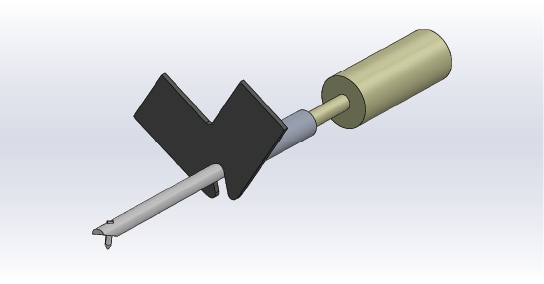
When the needle moves, the shade moves accordingly, blocking more or less light from the independent left and right photodetectors, which produce a varying voltage that represents the music. Thus, the Optical Cartridge detects music signals by capturing brightness changes in the reflected shadow rather than changes in a magnetic field as with MM or MC cartridges.
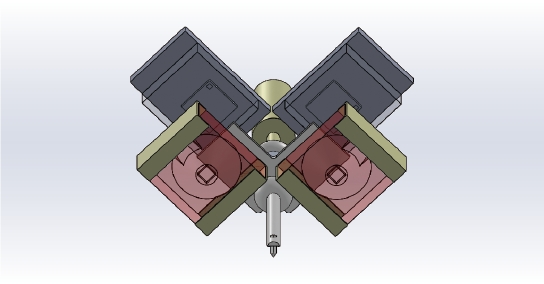
So far, that’s all very logical and not too dissimilar to how optical soundtracks of analog film used to be read in movie theaters. The complexity starts when you realize that the LEDS and photodetectors need a DC power source, which is not accounted for in tonearms and headshells. The solution is as simple as it is genius. The matching DS Audio Equalizer, which can be thought of as a Phono Stage with extras, supplies power to the LEDs of the Optical Cartridge using the blue and green tonearm ground wires. This is one important reason why the DS Audio Optical Cartridges cannot be used with a regular Phono Stage. The second important reason is a bit more complicated and comes down to the requirement of the Optical Cartridges for a deviating EQ curve from the regular RIAA curve.
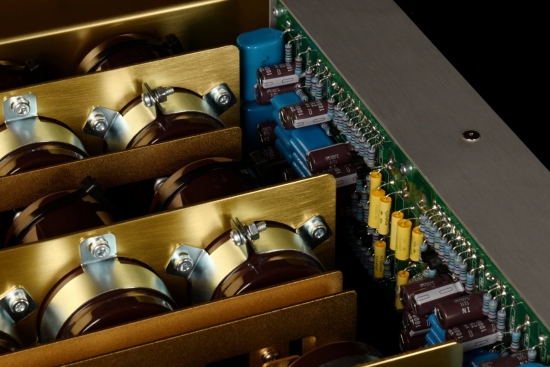
To elaborate on this, DS Audio explains that the output of an MM or MC cartridge is proportional to its speed, and thus, the output increases as the frequency (speed) rises. The optical cartridge, however, has an amplitude-proportional output that has an entirely flat output from the lowest frequency to the highest frequency. Since the optical cartridge is classified as amplitude-proportional and is not affected by changes in speed, it has totally different output properties. As a result, much less EQ correction is required compared to traditional MM or MC cartridges, and because of this, the RIAA correction circuit of the optical cartridge also requires much less manipulation of the signal.
Of course, we cannot allow the DC to remain in the output signal as that would upset equipment and potentially damage the loudspeakers. Thus, there is a low cutoff (high-pass) filter that can be set to 30 or 50 Hz using a toggle switch on the rear of the Equalizer. To facilitate badly warped records, the user can use the Equalizer’s secondary sets of outputs for a steeper cutoff.
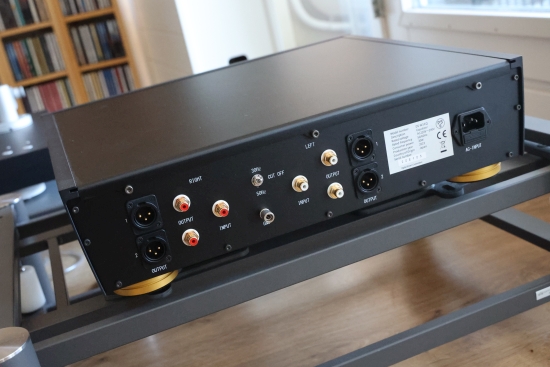
Besides the required power feed and different EQ requirements, there are two other reasons why a special Phono EQ is needed. First, the output from the photodiodes is a whopping 70 mV! This is yet another big advantage of this system, as it makes life much easier for the wires, interlinks, and phono stage. I mean, 70 mV! Compare that to the sub-1 mV output from MC cartridges, many of which dip to 0.4 mV or even lower. The Denon DL-304 outputs 0.18 mV, and some carts go even lower. It’s mind-boggling how a phono preamp can amplify such a low signal without introducing copious amounts of hum or distortion. High Output MCs are typically 2,5 mV, which can be used with an MM phono stage, but ultimately, even MM cartridges do not typically exceed 5 mV.
As a result, DS Audio systems are sold as such: a System. The cartridge should always be paired with a dedicated Equalizer.
Nomenclature: DS-W3 CR, DS-W3 EQ, and Replacement Stylus
‘DS-W3 CR’ describes the Optical Cartridge, while ‘DS-W3 EQ’ describes the Equalizer unit. While described separately, the Optical Cartridge is not compatible with standard RIAA Phono Equalizers. Thus, the DS Audio Cartridge and EQ must be considered an inseparable pair unless you opt for a compatible EQ product from one of the manufacturers mentioned in the Compatibility section below.
Uniquely, the cartridge’s stylus can be replaced. Thus, one need not discard the entire unit but replace only the part that is worn, which, I presume, concerns the needle/stylus/suspension/shades assembly.
Compatibility
DS Audio have recently made their Optical Cartridge Equalizer Technique available for 3rd party manufacturers to implement into their products. As a result, the DS Audio Optical Cartridges are now fully compatible with certain Phono products from brands like Soulution, EMM Labs, Meither, Soul Note, Westminster Lab, and Keces.
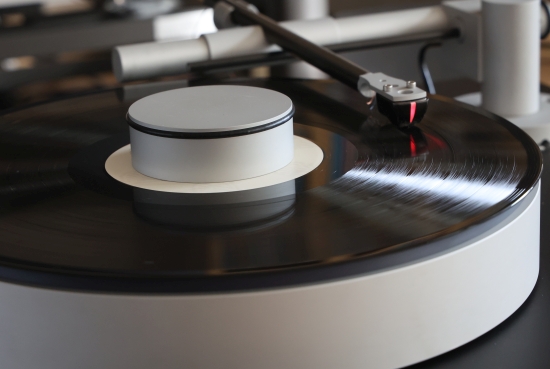
DS Audio DS-W3
As the third model up, the DS-W3 is positioned in the middle of the manufacturer’s 6-model portfolio. Compared to the entry-level and step-up model, the DS-W3 offers an independent LED and photo-detector arrangement for the left and right channels, reduced weight of the shading plate, a Boron Cantilever and aluminum body, and a thicker Equalizer PCB with thicker copper traces. The DS-W3 Cartridge employs a Boron cantilever with a Line Contact Stylus.
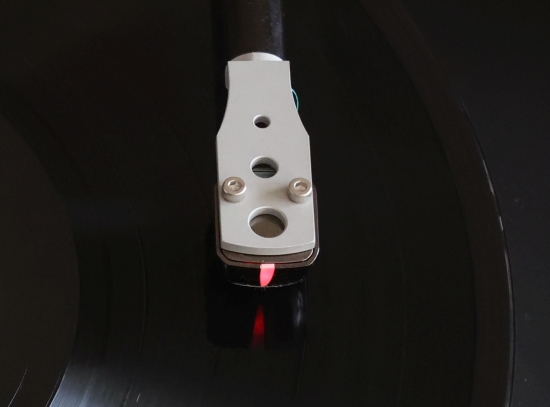
In use, the red light on the cartridge’s front shines down to indicate precisely where the needle will land; clever, very clever!
Operationally, the DS Audio W3 Equalizer is simplicity itself. The front panel has only an on-off button. The back panel has RCA and XLR outputs rated at a healthy 500mV with a 120-Ohm impedance, and in terms of adjustability, there’s only a toggle switch to set the low cutoff (high-pass) filter to 30 or 50 Hz. Because the Equalizer has to filter out the DC power, the filter cannot be switched off entirely. However, it is doubtful that there will be usable audio at 30Hz. To facilitate badly warped records, the unit has a secondary set of RCA and XLR outputs that incorporate a steeper cutoff. Just as with a regular Phono Preamp, the DS Audio W3 Equalizer can be connected directly to any integrated amplifier or preamplifier.
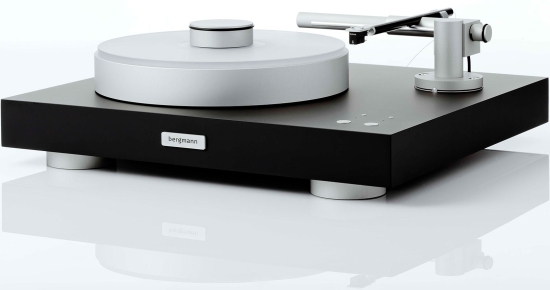
Bergmann Magne
The Bergmann Magne is an air-bearing turntable with a 5.5 kg heavy aluminum platter with a polycarbonate mat. The platter rotates around a hard anodized spindle inside a low-friction polymer bearing. Whereas regular bearings have a horizontal contact point, the Bergmann bearing is only used for centering. The platter does not rest on a physical contact point but floats on a thin air film provided as pressurized air from an external pump. This means that the platter is not only well decoupled from the rest of the turntable and its underground but also has incomparably low friction. The sleek yet deceptively large plinth measures 440 mm deep, 495 mm wide, and 165 mm high. Made from polymer and aluminum, it is reassuringly heavy.
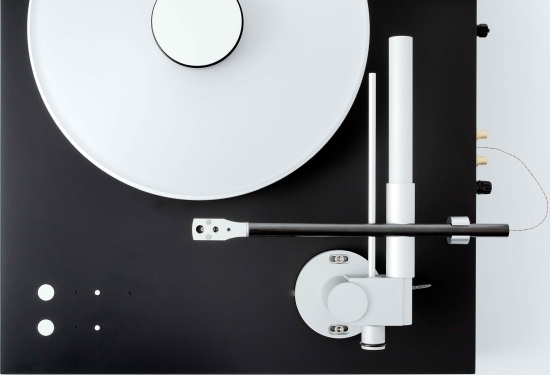
Unlike the higher-tier Bergmann turntable models, the Magne comes complete with a tonearm. And not just any tonearm, but a true linear-tracking air-bearing tonearm. The arm construction uses a carbon-fiber tonearm fixed to an aluminum collar that slides around an inner aluminum tube, perforated with tiny holes. Pressurized by the same single pump, the tonearm floats freely and moves across the record with frictionless motion.
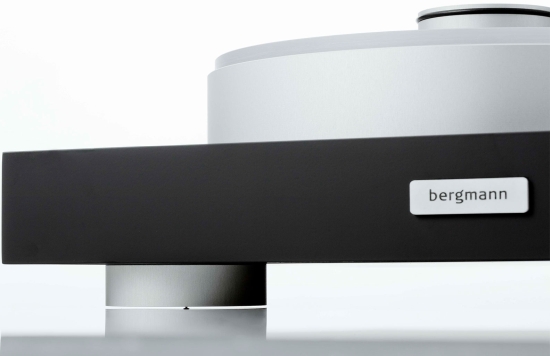
The arm tube consists of a double tube construction with damping between the tubes, and all parts are assembled using 2-component epoxy. The tonearm wire consists of a continuous length from cartridge clips to the connector. The counterweight is decoupled from the arm to avoid resonances and provide easy adjustment.
The external air supply unit that contains the pump is equipped with a dust filter as well as reservoirs to obtain a dry, clean, and smooth airflow. Because a pump is used, not a compressor, the unit does not get hot and it does not create condensation.
The impulses from the pump are absorbed in an encapsulated reservoir to ensure an even airflow to the air-bearing and tonearm. The air supply is fitted with an externally-located user-replaceable filter, which prevents dust particles from entering the system. The pump itself is an oil-free, long-life unit which does not require much maintenance.
The air supply is so quiet that it can be used in the listening room. When in use, it is not entirely silent but very well-damped and certainly quiet enough to be inaudible when music is playing, even when listening at a very low level. Especially from the listening position a few meters away, it is hard to tell if the pump is on or off. It is quieter than the mechanical transformer hum that can sometimes be heard from some audio components. But what about the air itself? One might fear that the air exiting from the tonearm and underneath the platter must make a loud hissing sound, but there is no need to worry as the airflow is so whisper-quiet that it is completely inaudible even from 1 meter away.
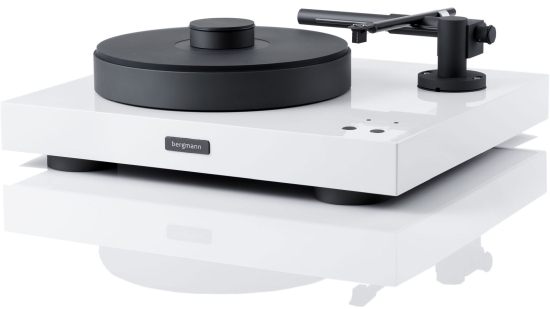
Next: First Use, System Context, Listening, and Conclusion
